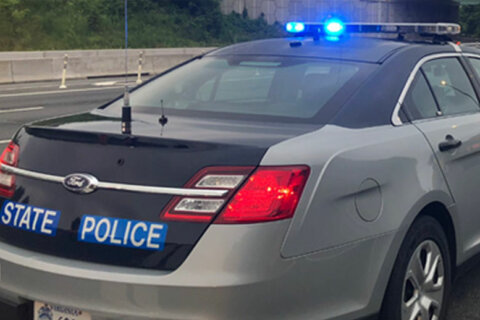This article was republished with permission from WTOP’s news partner InsideNoVa.com. Sign up for InsideNoVa.com’s free email subscription today.
This article was written by WTOP’s news partner, InsideNoVa.com, and republished with permission. Sign up for InsideNoVa.com’s free email subscription today.
Manassas city officials are looking ahead to what’s next for the city’s airport, with lots still to be done before commercial airlines can take flight.
A recently proposed commercial flight agreement between the airport and Avports is expected to get its first reading from the City Council July 10, with the final reading slated for July 17. If approved, the agreement would trigger a flurry of work to get the airport’s terminal ready for commercial service in the next two years.
For the airport to hold up its end of the agreement with Avports – a Dulles-based airport operations manager – the city’s biggest responsibility will be to be certified by the Federal Aviation Administration under Part 139, which establishes requirements for airports serving scheduled commercial service.
Airport Director Juan Rivera said airport leaders will immediately set up meetings with FAA representatives following council approval, and city leaders hope to have their application to the agency in the fall.
Rivera said the airport is mostly run to Part 139 standards, but with commercial service in the works, the FAA will have to conduct its own review. That will require a full airport operations manual, which the airport currently has but will need updating, an application for a categorical exclusion from preliminary environmental assessment work and the contracting of aircraft rescue and fire services.
Rivera will also have to return to the council to appropriate money from the airport’s general fund for some additional full-time personnel to help manage the changes.
“Things will start cooking, or kicking off, pretty quickly once it’s approved and it’s signed off on,” Rivera told InsideNoVa.
Estimated timeline
The whole certification process is expected to take 12 to 18 months, after which the airport will have to coordinate with the Transportation Security Administration to set up checkpoints and staffing, all of which is provided at no charge by the TSA.
“Our part of the deal, the airport’s part of the deal, is to get that certification,” Rivera said. “That’s the number one thing that we’re going to have to do.”
In the meantime, Avports will be working to hold up its end of the bargain. The company will be responsible for reorganizing the airport’s current terminal for the first phase of limited scheduled service. It will also be working to finalize agreements with carriers to begin running flights.
If an agreement is approved, the company would pay rent to the airport’s general fund beginning next year. As the plan currently stands, the first year’s rent would be $504,000. It would increase to $692,000 the following year and then to over $700,000 a year for the remainder of the 40-year lease.
Airport officials anticipate that the rents will more than cover any expenses incurred by the airport itself, and Avports will be on the hook every year, regardless of whether it has a carrier running commercial service.
Avports officials told InsideNoVa they plan to have multiple carriers serving the airport at all times. And while some, they said, have expressed interest in getting service up and running within 18 months, a two-year time frame is more likely.
Noise studies?
The biggest concern about the plan, for now, relates to noise. If the second phase of the project is ultimately completed, the airport expects to see around 30 commercial flights per day, which would likely make for a noisier environment in nearby neighborhoods.
And with the airport receiving federal money, the terminal expansion that’s central to phase two would require a full environmental impact review under the National Environmental Policy Act. Among other things, noise impacts would have to be studied and reported.
As of now, Rivera there are no plans to conduct noise reviews for the first phase of the agreement, in which the airport’s terminal would be reorganized – but not expanded – and a handful of commercial flights would start running daily in 18 to 24 months.
“Eventually, what will happen is we will get to the point where we have to do an environmental assessment. And once we get to that, that’s when we would look at what, if any, significant impact there would be on the surrounding area,” Rivera said. “So we have a ways before we get to that.”
Just how much more noise the new flights bring will be dictated by what kind of aircraft the carriers use. That is unknown at the moment.
Rivera said the airport’s 6,200-foot runway limits the type of planes that can land and take off there, and you won’t see any Boeing 747s flying out of Manassas. But beyond that, he said, not too much is clear. It will ultimately depend on what the carriers want to do, the length of the runway, aircraft length and the geometry of the taxiways.
“We’ve looked at the [Boeing] 737-800. We’ve looked at the [Airbus] A321. Those aircraft can operate in here with no issues,” Rivera said. “But again, I’m not going to speculate. It’s the runway length, how much fuel they’re taking, how much baggage they have on board, how many people are on board, all make a difference on the utilization and what they can do on the runway.”
Tweed New Haven Airport in Connecticut, for example, is operated by Avports with just a 5,600-foot runway. Avelo Airlines currently runs service from there to three Florida destinations daily using 737-800 planes that carry up to 189 passengers each.
“I can’t tell you what is going to change with the noise contours, because until we know how many flights, the types of aircraft we’re going to be using, we can’t make that determination,” Rivera said. “So we’re a ways away. And I understand a lot of folks don’t like that, and they want us to say, ‘This is what the impact is going to be.’ Well, we don’t know until we get a little bit further down in the process.”







